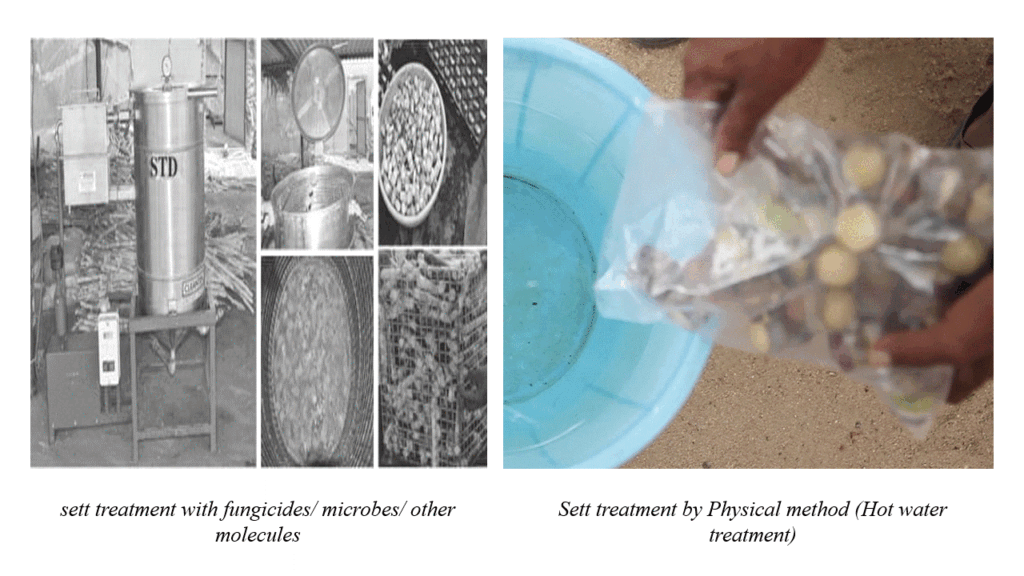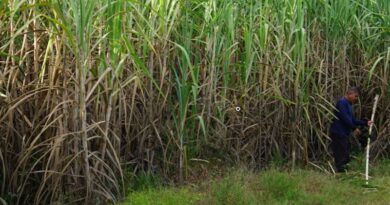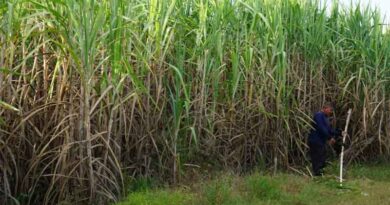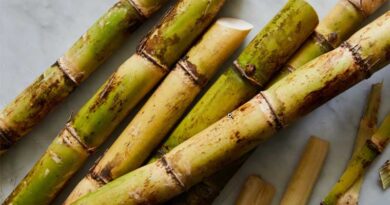Sugarcane Red Rot Disease Management Through The Physical And Biological Practices
Vikas Singh, R. S. Sengar, Mukesh Kumar and Garima Sharma, Division of Plant Biotechnology, Sardar Vallabhbhai Patel University of Agriculture and Technology, Meerut (UP)
28 February 2024, New Delhi: One of India’s most significant cash crops is sugarcane. India, which consumes a lot of sugar, is the second-largest producer of sugarcane after Brazil. It serves as the raw ingredient for the manufacturing of khandsari, jaggery (gur), and white sugar. It is also employed for chewing and juice extraction for drinks. Sugarcane has emerged as the crop of choice for producing eco-friendly and renewable energy in recent years. The crop of sugarcane and its byproducts make up around 1.1% of India’s GDP. Over the past 20 years, sugarcane has gradually expanded its share of the agricultural GDP.
The most destructive sugarcane disease in India is red rot, which is caused by the fungus Colletotrichum falcatum Went. Since its first documented pandemic in the Godavari Delta (A.P.) in 1895-1900. A plant that is severely afflicted with the disease quickly dries up (cover photo). Pre-monsoon is when the infection is essentially sett-borne, and from August to October is when the disease manifests in standing crops. In general, the disease causes some plants to die early in the crop season (settling mortality).
The disease caused multiple epiphytotics in India, which led to the abandonment of several great sugarcane varieties (Co 213, Co 245, Co 290, Co 312, Co 313, Co 419, Co 527, Co 997, CoC 671, CoS 510, CoS 770, BO 3, BO 17, BO 29, BO 54, etc.) from cultivation. Co 1148, Co 7717, CoJ 64, CoJ 82, CoJ 84, CoS 767, CoS 8432, CoS 8436, CoSe 94522, CoLk 8001, CoLk 8102, etc. were the most recent prey of this infection in the subtropical region.
Signs and Identifying Infected setts are the primary means of disease transmission. Germination is impacted when sick setts are planted. Certain buds and shoots may not germinate because they die too soon. Tiller mortality is the phrase used to describe the death of sick plants that also occurs on the germinated crop.
Symptoms of Red Rot

It takes a while for symptoms to manifest, especially once the sugarcane plant is nearly fully grown and sucrose formation starts. First, leaves show signs of them, followed by stems. The first signs appear on leaves, which are often third or fourth from the top. As their tips begin to wither, they start to lose color and droop a little. The midribs then develop dark-reddish patches that have a tendency to grow longer quickly and become blood-red, surrounded by dark borders.
Later on, the middle of these regions takes on a straw-colored hue, and a large number of tiny, dark dots may be seen developing on the infection courts in the midribs. The fruiting bodies of the pathogen, known as acervuli (sing. acervulus), are represented by these dark spots.
When the infection is severe, fruiting bodies are seen practically everywhere on the leaf. Later on, stems begin to exhibit signs. The rind shrinks and becomes longitudinally wrinkled, and they shrivel.
Infection of red rot on sugarcane and their effect

When the pathogen causes spindle infection—an infection that reaches the spindle from the stalk and forms numerous acervulines, typically on the lower side of the midrib in a week—the premonsoon and monsoon months see the greatest secondary transmission of the disease. Furthermore, the other main symptoms manifest as a red, elongated area on the top side of the leaf midrib, typically accompanied by an ashy grey center on which a large number of acervuline form and take around a month to sporulate. The mid-rib isolates typically do not infect the cane stalk. The pathogen mostly spreads through sick setts during its primary phase, with conidia playing a major role during its secondary phase, which is assisted by monsoon rains.
The disease has multiple effects on cane and sugar production: (i) it reduces tonnage by lowering the number of millable canes; (ii) it lowers the quality of juice, which affects sugar recovery; (iii) it lowers the quality of seed cane by causing latent (incipient) infection, which aids in the spread of the pathogen; (iv) it even causes complete crop failure by destroying the clumps or creating large gaps in the subsequently raised ratoon crop.
In wet locations, like the eastern U.P. and northern Bihar, secondary spread is by far the most significant. The pathogen is a temporary guest in the soil, and it will continue to exist in the infected debris as long as sugarcane waste is left undigested in the soil. Because C. falcatum is highly sensitive to microbial antagonism, it cannot tolerate the intense competition of saprophytes in soil. Supervisory Use just the red rot-resistant cultivar that is appropriate for the area. Moist Hot-Air Therapy (MHAT) should be used to create seed cane for two and a half hours after the three-tier seed program at 54°C and 95–99% RH. Use seed from a crop that is healthy and free of diseases.
Use seed from a healthy disease-free crop. Sett-treatment with Bavistin @2g/l to check the sett-borne (surface-borne) infection. Diseased crops should be harvested as early as possible. Any sett showing reddening at the cut ends or the nodal region should be discarded. From April to June look for the spindle infection and settling/tiller mortality. As soon as the disease is noticed in the field, the affected clump along with the root system should be uprooted and destroyed. The affected clump area be sanitized with bleaching powder or through the application of one fistful of Trichoderma multiplied culture.

Management: Ratooning of diseased crops should be avoided. Bunding of affected fields should be done to avoid free movement of rain/flood water. Crop rotation should be followed in affected fields. Application of Trichoderma 200 kg/ha (a week’s growth on unsterilized press mud developed through the mixing of 20 kg growth of Trichoderma (TMC) on sterilized press mud) at the time of planting should be done. The impacted fields should rotate their crops. At the time of planting, apply 200 kg/ha of Trichoderma (a week’s growth on unsterilized press mud created through the mixing of 20 kg growth of Trichoderma (TMC) on sterilized press mud).
Also Read: Marut Drones and PJTSAU’s Direct Seeding Device Receives World’s First Utility Patent
(For Latest Agriculture News & Updates, follow Krishak Jagat on Google News)















